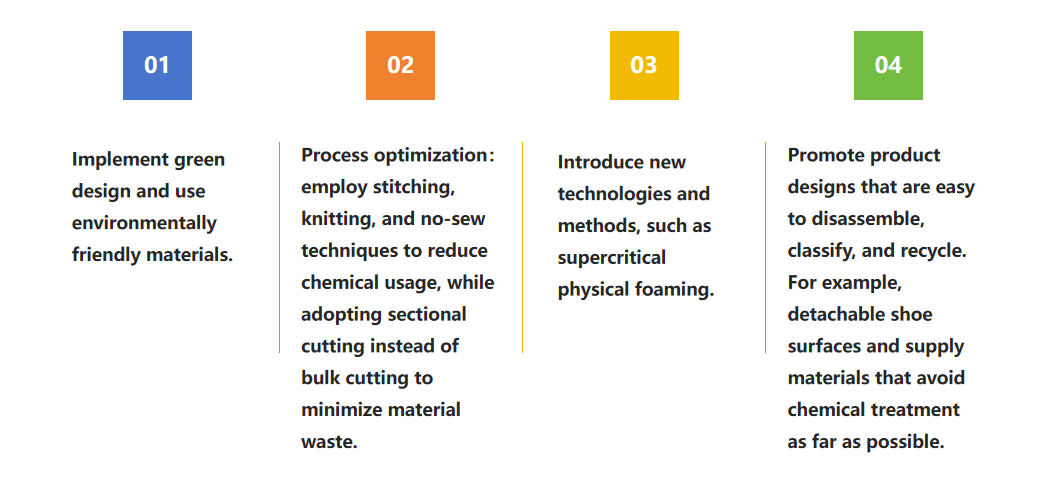The operation of equipment converts water, energy, materials, and other resources into products while generating pollutants such as wastewater, air emission, and waste. Under the development model of a circular economy, pollutants are not simply defined; they can be extended as resources to participate in new production activities, thereby reducing the waste of resources, the generation of waste, and the emission of pollutants. The Huali Group develops our circular economy through the following approaches.
Green Design And Cleaner Production

In 2024, the group developed a total of 2,109 types of models, of which 1,543 types use environmentally friendly materials, accounting for 73.2% of the total number of models developed.
Resource Recovery And Reuse
Waste Classification and Collection
Waste is the product of materials and materials that are not fully utilized in the production process. The group's factories identify and classify waste from different materials, set up dedicated areas for centralized storage of waste, facilitate subsequent recycling and reuse, and promote the recycling of materials and resources.
Building the Waste Recycling and Reuse Network
Huali Group screens suitable waste recycling and reuse vendors through multiple channels, conducting reviews and evaluations based on vendor qualifications and daily management activities to establish the Group's waste recycling and reuse vendor network. Additionally, the Group periodically supervises and assesses vendors' annual waste treatment activities to enhance their comprehensive performance in environmental, health, and safety areas, improving overall service quality and competitiveness. This, in turn, better supports the Group's long-term goal: achieving 100% waste circular reutilization by 2035.
More


